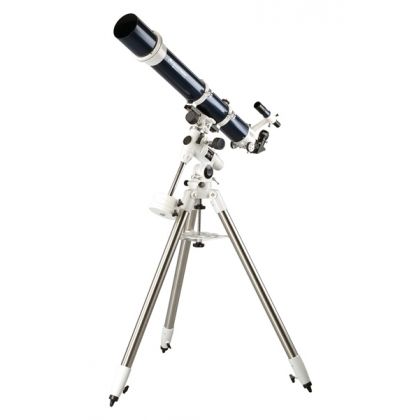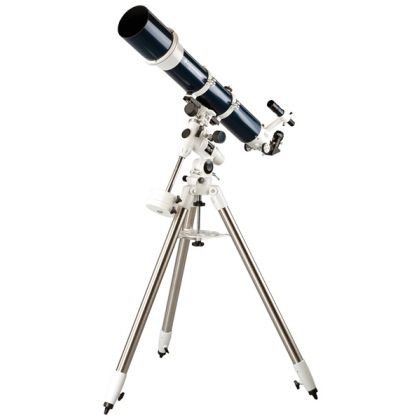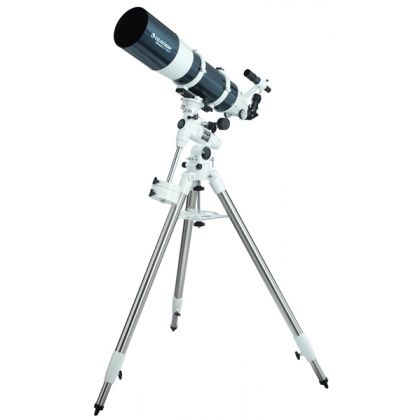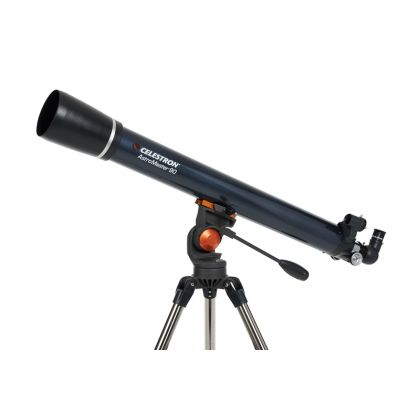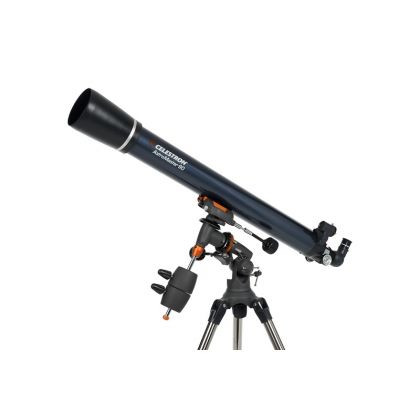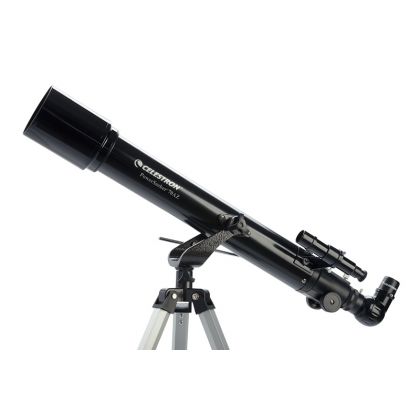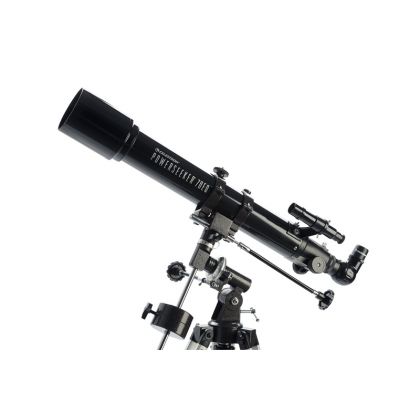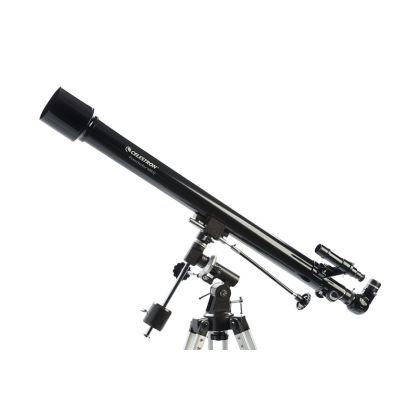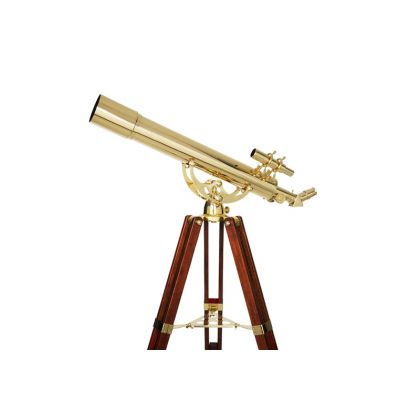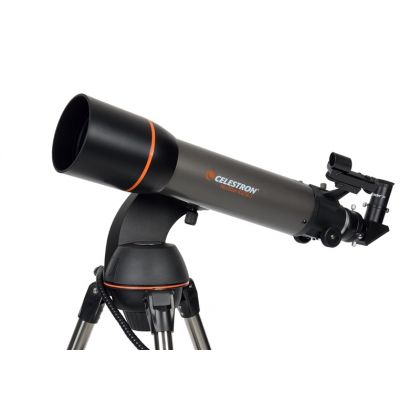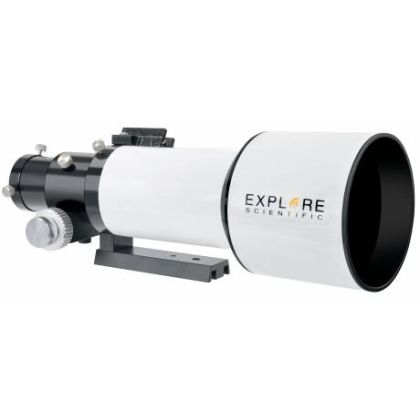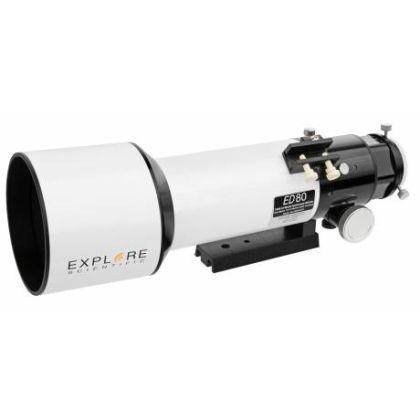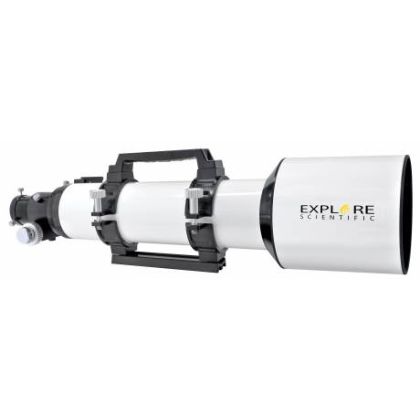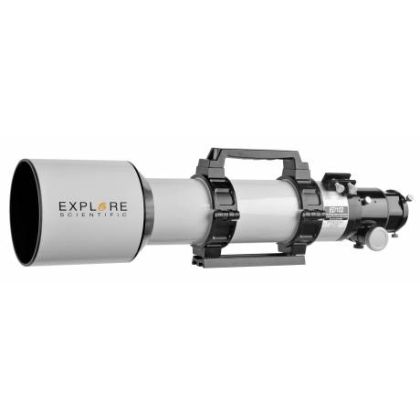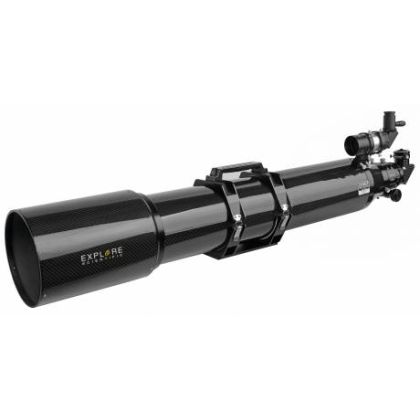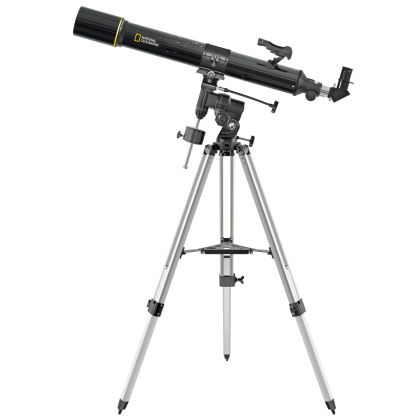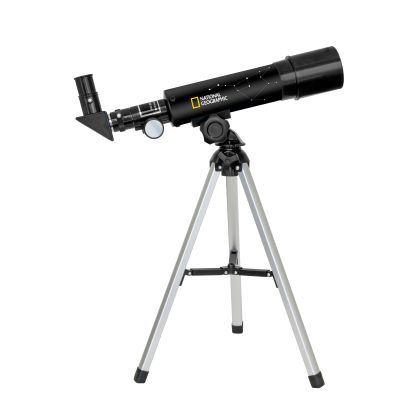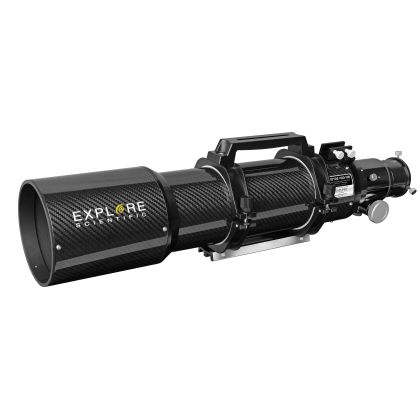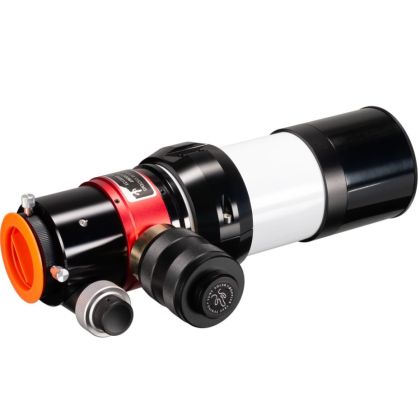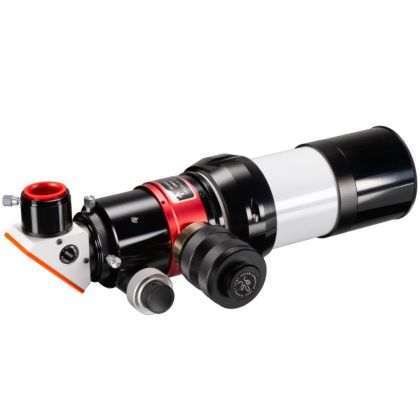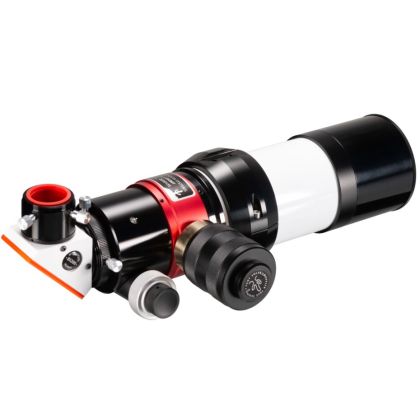Mounts
Refracting Telescopes
Sub Categories
General properties
The first-ever built telescope was a refractor, so it is no wonder that the refractor is a telescope with the most recognizable shape. It is a type of telescope with a long tube and a combination of glass lens at its objective (objective lens) and a second glass at its eyepiece (eyepiece lens).
Light enters the refractor telescope at the upper end, where it is refracted (bent) as it passes through the lens. In the optical tube, light travels in a straight path through a vacuum. The light focuses on a single point (called focal point) at the bottom of the telescope.
In telescope, the image is magnified with the set of the eyepiece lens. Lens at the eyepiece sends the rays to the eye as parallel rays.
The image size depends on the focal length of the telescope. The focal length is the distance between the objective lens and focal point — the longer the focal length, the bigger the image.
>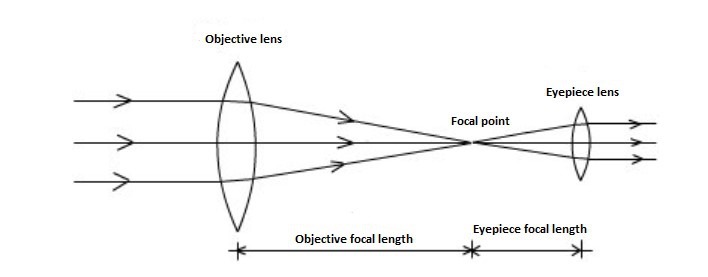

Path of the light in a refracting telescope
Refracting telescopes are very rugged and sturdy — it is hard for the optics to come out of the alignment. Because of a long tube, the eyepiece is at the lower end of the telescope, meaning that for comfortable viewing, a high tripod is required.
Compared to other types of telescopes, refracting telescope has a small aperture. Because of that, this telescope doesn't collect as much light as telescopes of a different design. With refracting telescopes, the lens can only be supported at the ends of an optical tube. If the lens of a telescope is too big, it can happen that the center of the lens sags due to gravity — image is distorted.
Optical Tube
A significant advantage of a refracting telescope is its closed tube — this is good for two reasons:
-
Firstly, the glass surface of a telescope is air sealed, which means that it is protected against dust, dirt, and humidity — because of that the lens doesn't need much cleaning.
-
Secondly, the image is steadier and sharper than on other types of telescopes because the effects of changing temperatures are eliminated.
Chromatic Aberration
There are also some disadvantages of refracting telescopes. One of the most well-known is an effect called chromatic aberration. Every color has a different wavelength. When passing through the lens, every color refracts at different angles.
Chromatic aberration occurs because the lens of a telescope is unable to focus all colors on a single point. This effect is seen as a rainbow of colors around the image. The result is disconcerting for astronomers and astrophotographers.

Chromatic aberration in a regular lens - refracting telescope
(Source: Synthesis of high refractive index materials for manufacturing apochromatic lens by 3D printing - Scientific Figure on ResearchGate. Available from: https://www.researchgate.net/figure/Chromatic-aberration-in-a-regular-lens_fig2_321017277 [accessed 28 Oct, 2019])
There are several ways to reduce chromatic aberration in a telescope
-
In the 17th century, they used to build telescopes with very long tubes — a very long focal length of a telescope diminishes chromatic aberration.
-
In a modern refracting telescope, an achromatic or apochromatic lens is added to reduce chromatic aberration.
Observations with Refracting telescope
Refracting telescopes are great for lunar and planetary observations. This type of telescope produces high-contrast images that are great for observing the Moon and planets, but there is not enough light-gathering power for observing the “deep-sky objects” such as nebulas and galaxies.
A short presentation of Refracting telescope is available here.
Slideshare Presentation of Refracting telescope
Short Presentation | Refracting Telescope | Optics Trade from Optics-Trade
Filters
Sort
Filters
Sort


